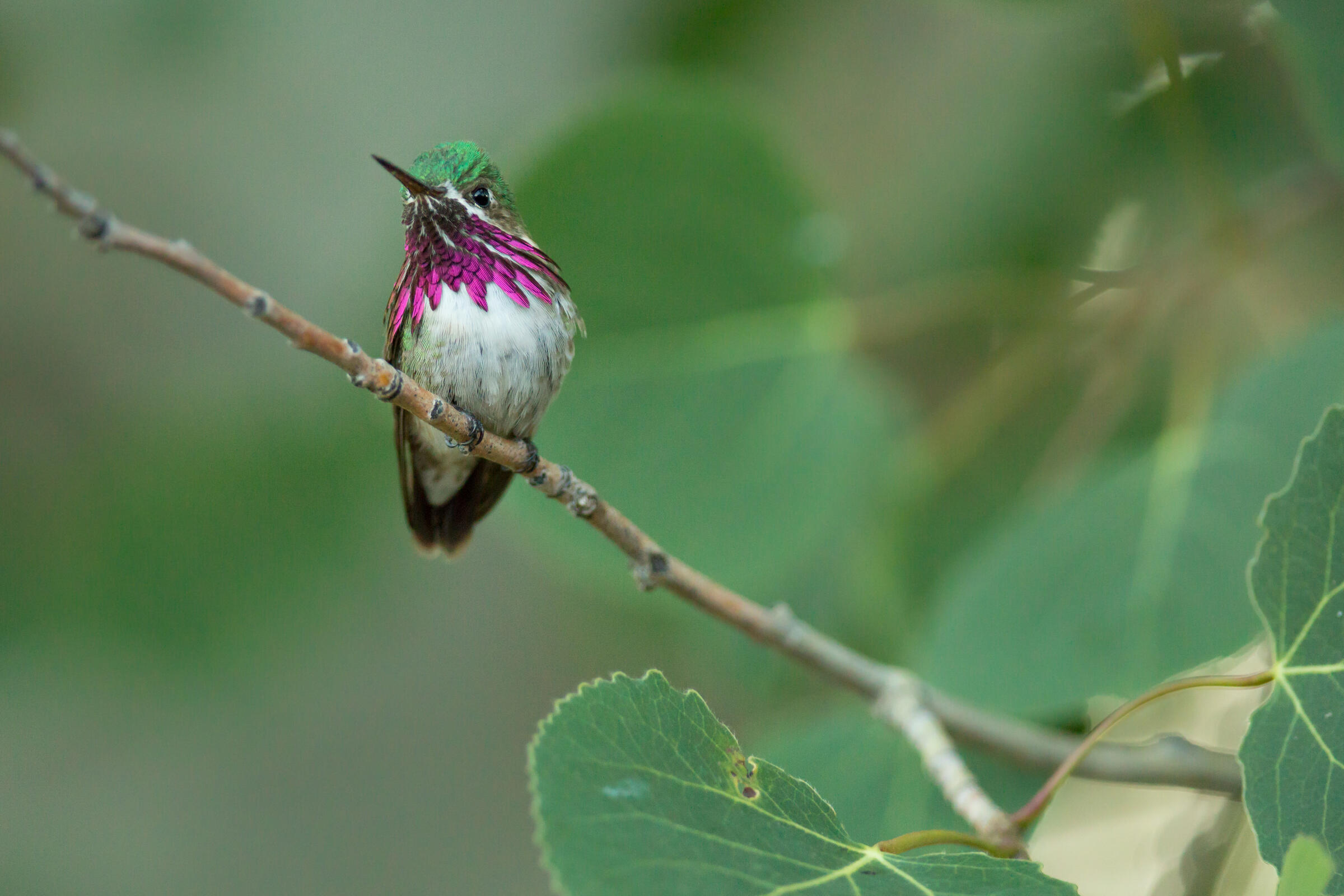By Corina Solis, Mitchell Lake Audubon Center Land & Conservation Coordinator, Jake Poinsett, Trinity River Audubon Center Education Manager, and Dallas Kelley, Audubon Texas Director, Public Affairs
Published March 14, 2024
The camera pans and zooms closer, the music swells, lush lawns, gardens abloom, hardy tree canopies…green foliage abounds with the sweet sounds of birds. While a common introductory scene in many movies, it takes a lot of hands-on work to develop this home habitat coverage – and not every space can be designed or desired to depict this scene.
There are many ways we can enjoy a human connection to meaningful habitat, from containers, balconies, porches, and lawns to large-scale working lands. Trees, plants, flowers – especially native plants! – are a critical component to a healthy community for birds, wildlife, pollinators, and people alike.
Texas provides critical habitat for two-thirds of the 914 North American bird species. These birds depend upon native plants to provide them with various sources of cover, nesting sites, and food. At our Texas Audubon Centers, our team is gearing up for a busy spring with native plant sales, planting demonstrations, and center site restoration. By creating and restoring valuable habitats for birds and other wildlife at Audubon Centers, we are also:
- building relationships through community action,
- cultivating local volunteers, and
- protecting valuable green space where birds thrive, people prosper!
At Mitchell Lake Audubon Center in South San Antonio, we are cutting back the plants in our native plant demonstration garden to prepare for spring. Mid to late February is a good time to give a hard prune to many of your native plants here in Texas. Pruning will promote new, and often times, dense growth. In other words, it can help to shape your plants, have them grow fuller, and produce more flowers. The result will leave you with some beautiful native plants in your garden beds or pots.
Having native plants in your garden comes with many benefits. Beyond their beauty, they conserve water, are low maintenance, and attract more wildlife. Mitchell Lake hosts nearly 50 different types of native plants located around the visitor center. This provides structural diversity for habitat cover as well as food diversity in the form of insects, nectar, fruit, berries, and seeds. This planning affords visitors the experience of many different bird species and other beautiful pollinators before leaving the site.
Trinity River Audubon Center (TRAC) is a biodiverse wildlife refuge located in the Blackland Prairie ecoregion of North Texas. Before being a hotspot for bird activity, environmental education, and a reprieve from the hustle and bustle of Dallas, TRAC was the largest illegal dumpsite in Texas history. Similar to most restoration projects, our work onsite is ongoing!
At the center, we propagate native prairie plants from seeds collected on the property, via root division, and rescue local plants from area hardscape development. We also acquire plants we are not currently growing from partnering organizations such as the Texas Conservation Alliance to supplement our efforts. Students from local high schools and colleges attend service-learning programs to learn about prairie ecology and earn valuable experience in the conservation field. They participate in hands-on removal of invasive plant species, assist with our greenhouse operation, and put new roots in the ground! The restoration at TRAC is a pivotal part of our mission, protecting birds and the places they need for today and tomorrow.
When planning your own home or work greenspace, it's important to consider plants that will thrive in your local environment, as well as a combination of evergreen and deciduous trees and shrubs that offer a variety of diverse food sources for wildlife throughout year, including:
- Larval insect hosts
- Nectar-producing
- Berry-producing
- Nut-producing
- Seed-producing
Learn more through National Audubon Society's plant database, the Native Plant Society of Texas, and the Lady Bird Johson Wildflower Center, for plants by Texas ecoregion and beyond. Happy planting!





